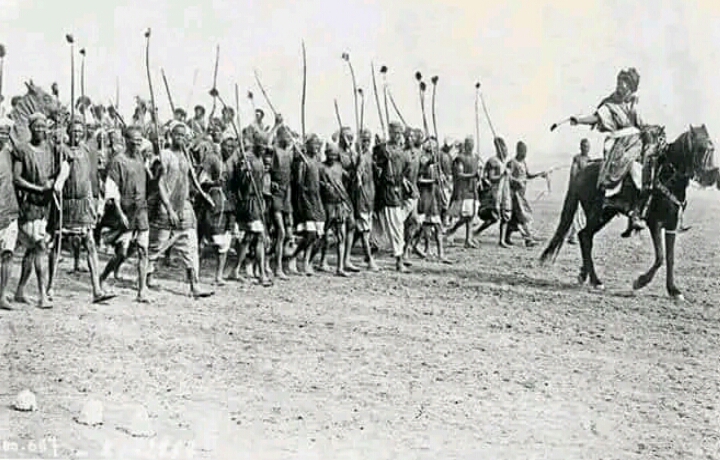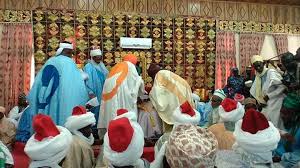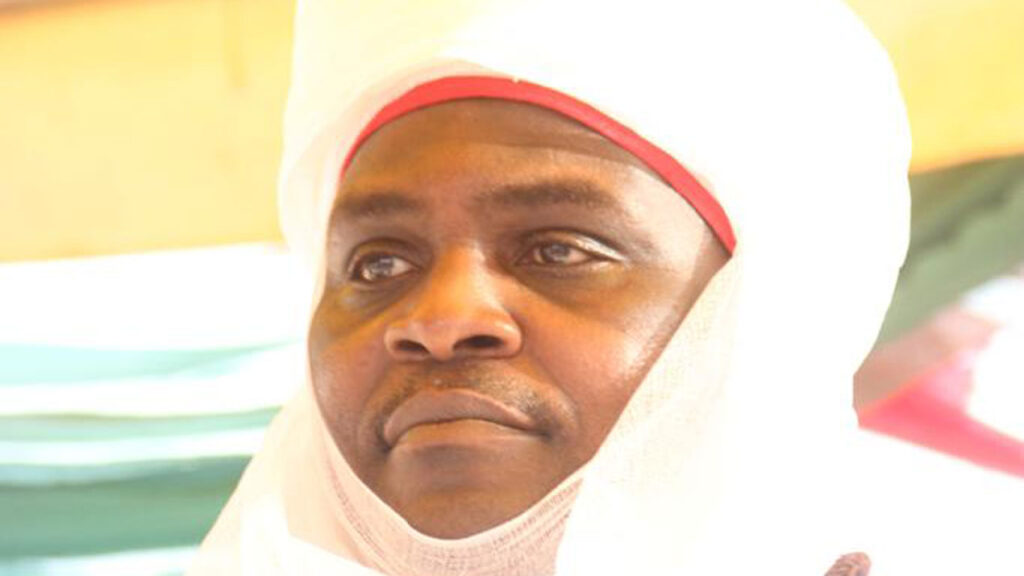Gobir is a city-state in Nigeria founded by the Hausas in the 11th century. Meanwhile, the Kingdom of Gobir was said to have been part of the seven kingdoms of Hausaland, which ruled for about 700 years, with its capital in the city of Alkalawa.
History has it that the elements of the ruling dynasty moved north in the early 19th century to Niger, where a rival dynasty rose to power at Tibiri as Sarkin Gobir (Sultan of Gobir). Thus, a restored traditional sultanate moved into Sabon Birni, Nigeria, in 1975.
However, one of the most well-known and significant histories in Africa is that of the Gobirawa (the people of Gobir). They originated as nomadic Copts, or kibdawa, in Arabia and immigrated from the east around 1000 A.D. Their records reveal that they originated in Gobir, Yemen, which is north of Mecca.
In this piece, Naijabiography tells the untold story of the kingdom of Gobir.

History
Gobir is well known for being the main foe of Usman dan Fodio, a Fulani Islamic reformer. A Gobir king named Bawa is thought to have invited Dan Fodio to the region in 1774. Dan Fodio settled in the village of Degel and started preaching.
In addition to being assigned some responsibility for Yunfa (1803–80), Bawa’s nephew and eventual successor, Dan Fodio, publicly criticized what he viewed as the abuses of the Hausa elite, notably the burden they placed on the underprivileged. Sarki Nafata (reigned between 1797–1798) changed Bawa’s policy of tolerance and was concerned about the rise in Dan Fodio’s supporters’ use of weapons. The two leaders who came after them wavered between authoritarian and liberal policies.
Meanwhile, history has it that the people of Gobir originated as nomadic Copts or kibdawa in Arebia and immigrated from the east around 1000 A.D. Their records reveal that they originated in Gobir, Yemen, which is north of Mecca. Gobirwa, led by their ruler Bana Turmi, is reported to have aided Prophet Muhammad (SAW) in the Battle of Badrin in 624 AD.
After the wars, half of them remained in Egypt under the leadership of Dangaladima, while the other half continued their migration through Borno and Khartoun to the west. They spent 200 years in Magala before becoming Asben masters at Goran Rami.
Later, they stayed another 200 years in the present-day Niger Republic’s deserts after being drawn there by the wealth of Balma. The current Tawn of Birnin Konni was founded during this time by their lord Dagazau. They remained in Baranda as well, until relocating to Birnin Lalle, where they spent an additional 2000 years. They struggled to choose a leader at Birnin Lalle, but once they settled on Dala as their king, the Tuaregs drove them south, and Dala led them to camp at a spot named Dutsen Zana. Bashirin Darwai, who founded the towns of Kunya and Gidan Runji, succeeded Dala as the country’s leader.

During Muhammadu Tsaida Rana’s reign, the Gobirawa engaged in war with the Katsinawa, forcing them to evacuate their capital, Katsina, and establish a new settlement in Maradi. The Gobirawa expanded their movement and travelled further south, defeating their neighbours as they went. They camped close to Zaria, where they established the towns of Soba and Sobi on the banks of the Niger in Nupe territory. For the following ten years, Soba and his army remained in Yoruba territory.
Some Gobirawa remained under Sule Dangaladima and intermarried with the Yoruba people, settling there. Given that Gobir Man was the first Hausa man to establish contact with the Yoruba, the Yoruba term “Gamba” is a distorted way of saying “Gobir.” The Dangaladima title is currently the second-highest traditional title in Ilorin.
Early in the 16th century, after returning from Yoruba territory, Sarkin Gobir Ibrahim Babari led the Gobirawa to establish their new capital at Alkalawa. After erecting the city’s fortifications, the Gobirawa were able to settle and consolidate their kingdom. Since the Battle of Badr, 1000 years ago.
The Tuaregs initially assaulted the Gobirawa in their brand-new city, but they were driven from the area at the Battle of Dangude. Ibrahim Babari enlarged the realm by capturing and sacking Birnin Zamfara, the Zamfara nation’s capital. Meanwhile, 15 years passed during these wars.

Thus, Gobirawas granted Gobir sovereignty over the entire region between Katsina on the east and Kabbi on the west, despite the fact that they experienced some setbacks in a few little conflicts. The remnants of Zamfara and Bakura were pushed up against the frontier to the south.
Ibrahim Babari, the spiritual leader of the Gobirawa people and one of the most well-known rulers in both Gobir and African history, was born to this Ibrahim Babari. Gobir reached its zenith during Bawa’s reign. Gobirawa probably fought conflicts with Katsina, Kabbi, Nupe, and other groups due to their tendency toward armed conflict.
This period of dominance lasted for almost 50 years until the Fulani Jihad troops led by Shehu Usman Danfodio attacked their capital, Alkalawa, in 1808, ending the reign of King Yunfa. The majority of the Gobirawa fled after the Fulani sacked Alkalawa to create a new capital, Tsibiri, which is currently in the Niger Republic. Some of them, led by Sarkin Gobir Danhalima, returned to the area around the ruins of Sabon-Birni, a branch of the first Gobirawa ruling family, around 1864.
Following their prior triumph against them, the Fulani made numerous attempts to occupy all of Gobir, like Sultan Atiku and subsequent succeeding Sultans of Sokoto, but those attempts were fiercely rejected. Sabon-Birnin-Gobir became a district of Sokoto after the British took control of the Sokoto Caliphate in 1903.
However, some Gobirawa is currently residing in the Southern and Eastern regions of the Niger Republic’s French territory. Since colonization, Gobir District has experienced peaceful coexistence with its native peoples. On the lineage of Gobir kings dating back to Bana Turmi, the current Sarkin Gobir Muhammadu Bawa is the 768th.
Given that the Gobirawa were formerly in charge of those lands, the Sarkin Gobir title is currently held by both the Fulani rulers of Isa and Gwadabawa, in addition to the Gobirawa of Sabon Birni. Gobirawa were formerly a fairly well-known group. Now that war is ingrained in their society, people may easily identify them by the 6 and 7 face markings on their cheeks. These facial markings may have come from Egypt, where they were observed by Egyptian kings.

Meanwhile, after attempting to assassinate Dan Fodio but failing, Yunfa exiled Dan Fodio and his supporters from Degel after coming into a dispute with them. Dan Fodio’s response was to form a jihadist army from the nomadic Fulani clans, which led to the Fulani War and the establishment of the Sokoto Caliphate.
The soldiers of Gobir and the other Hausaland states first had some victories, most notably at the Battle of Tsuntua, but Dan Fodio was able to seize the surrounding lands. In October 1808, Sarki Yunfa was assassinated when his forces took control of the Gobir capital, Alkalawa. Later, a portion of the state was incorporated into Sokoto.
Sarkin Ali dan Yakubu and Sarki Mayaki continued to oppose the Jihadists in the northeast. The Hausa chief of Katsina assisted in the construction of Gobir, a new capital, in Tibiri, 10 kilometres north of Maradi, in 1836. The Sokoto Sultan Muhammed Bello ended the Gobir Sultan’s uprising against the Sokoto Caliphate that same year at the Battle of Gawakuke.
However, the traditional Hausa Gobir ruling dynasty is still in place in present-day Niger. North of Sokoto in Nigeria, at Sabon Birni, a competing branch of the family is headquartered. From 1975 to 2004, the former Sarkin Gobir Muhammadu Bawa presided over Sabon Birni.





